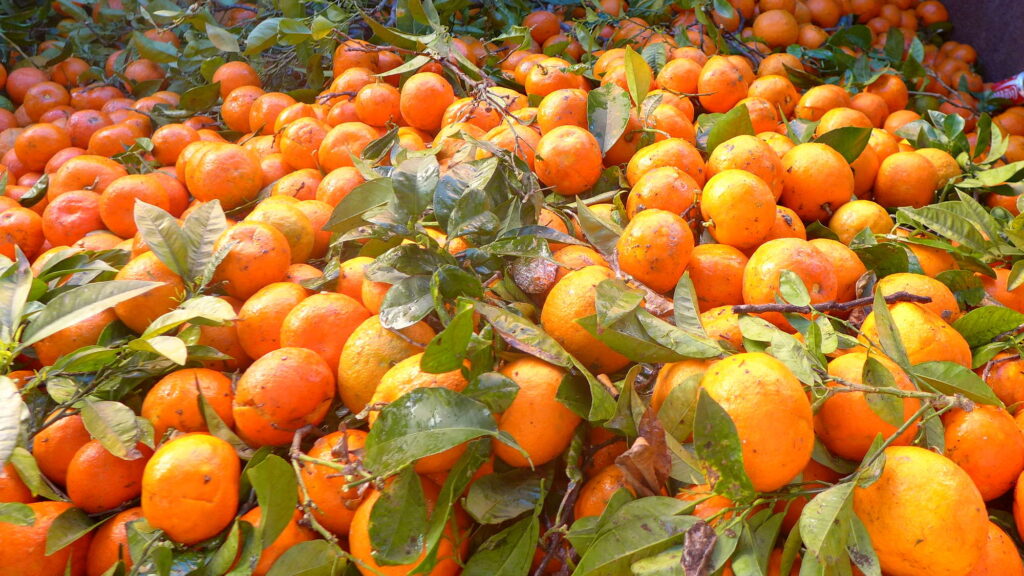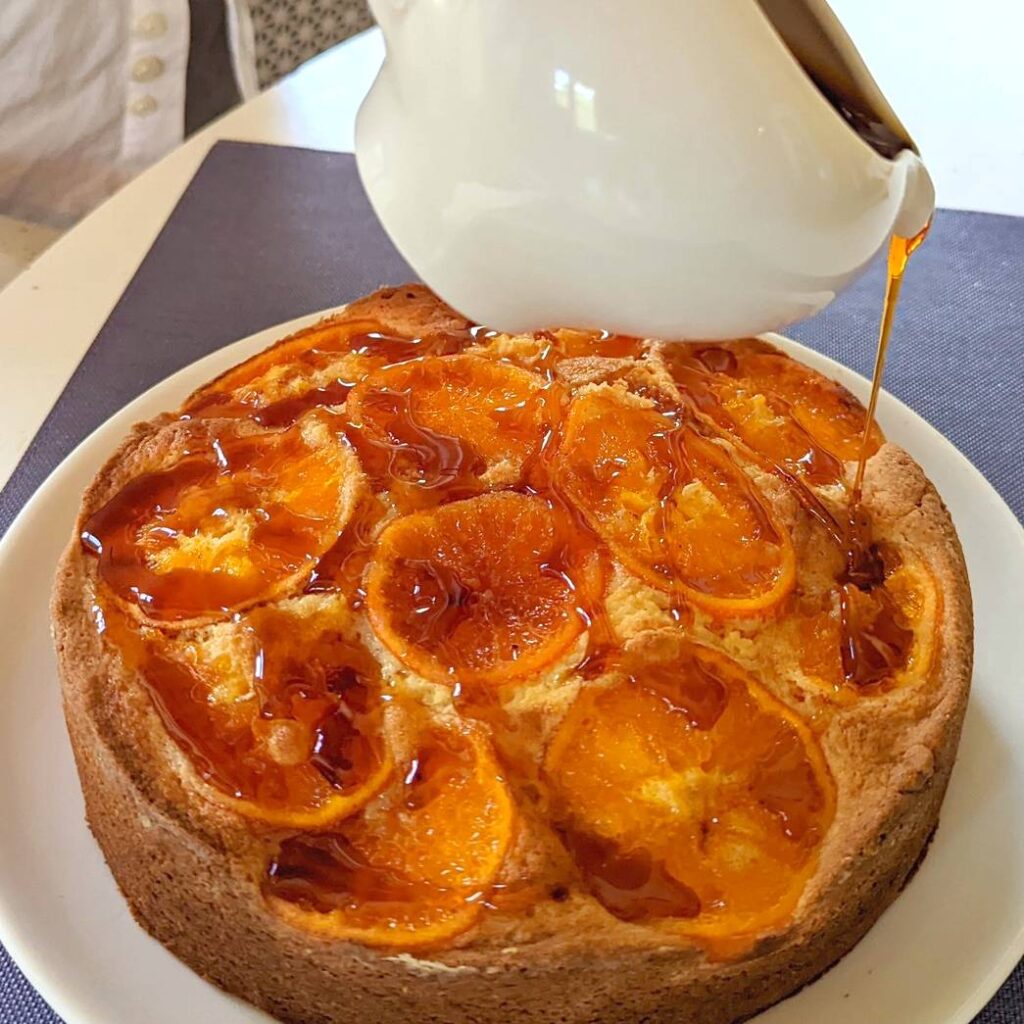
The whole idea of a Valencian orange is confusing. The area around Valencia boasts a staggering number of orange orchards. Most of the trees bear sweet oranges, but not what is called a Valencia orange in the U.S. That would be a creation of William Wolfskill, an agronomist who hybridized the juice orange in the mid-19th century. He called it Valencia because the oranges of that part of Spain were famously sweet.
Of course, they were sweet. They were what we now call mandarin oranges. And most of the citrus varieties grown in Valencia today are mandarins or one of the many mandarin-pomelo crosses. Orange remains one of the signature flavors of Valencian cuisine. Fresh oranges appear throughout the meal from an orange-onion salad to a simple plate of orange segments as dessert.
We might like the oranges of eastern Spain best of all in the homey orange cake with whole slices of lightly candied orange and a simple glaze. We’re always on the lookout for specialties in local bakeries. When we stopped into Horno San Bartolomé Tossal (Plaça del Tossal del Rei, 6; +34 963 911 126; hornosanbartolome.es), we noticed that all the locals were buying slabs of orange cake. By the time we got to the head of the line, there was just one piece left. We brought it home and promptly fell in love. Every time we passed that bakery, we’d buy a piece for that night’s dessert.
We tried to get a recipe but it seems to be so obvious that no one has bothered to write it down. By trial and error, we ultimately made a reasonable facsimile. Other kinds of oranges can be used, but be sure they are thin-skinned. Otherwise, they will be bitter.
VALENCIA ORANGE CAKE
For topping:

- 1/2 cup sugar
- 1/2 cup water
- 4 mandarin oranges, well washed
For cake:
- 1 1/2 cups (180g) all-purpose flour
- 1 1/2 teaspoons baking powder
- 1/4 teaspoon fine sea salt
- 1/2 cup (1 stick) butter, room temperature
- 1 cup (200g) granulated white sugar
- 2 large eggs, separated
- 4 more mandarin oranges, zested and squeezed to generate 1/2 cup juice
- 1/2 teaspoon vanilla extract
Make topping by dissolving sugar in water over medium heat. Meanwhile, slice oranges horizontally, taking very thin slices off top and bottom to discard. Cut slices 1/4-inch thick. Carefully lower orange slices into syrup and simmer 15 minutes. Remove slices to wax paper and reduce the syrup until it begins to brown. Remove from heat to cool.
Prepare a heavy-duty 8-inch cake pan by spreading with solid shortening all over bottom and sides. Dust evenly with flour, tapping out any excess. Set oven to 350°F.
Sift together flour, baking powder and salt. Set aside.
In large bowl, beat butter with electric mixer until soft and smooth. Add sugar and beat until light and smooth. Add egg yolks, one at a time and mix. Stop occasionally to scrape down sides of bowl. Add zest and mix.
With mixer on lowest speed, alternate between adding flour mixture and juice, beginning and ending with flour. Stir in vanilla extract.
Using clean beaters in a separate bowl, beat egg whites until stiff but not dry. Stir a quarter of the beaten whites into the batter, then fold in the remainder in several additions.
Place batter in prepared pan, tapping pan to level. Carefully lay cooled slices of candied orange on top.
Place in oven and bake 35-45 minutes, until cake tester comes out clean. Let pan cool briefly on rack before using spatula to carefully remove cake to a plate. Pour reduced syrup over top to fill gaps between oranges and moisten the sponge.
Let cool. Slice and serve, with or without whipped cream.
